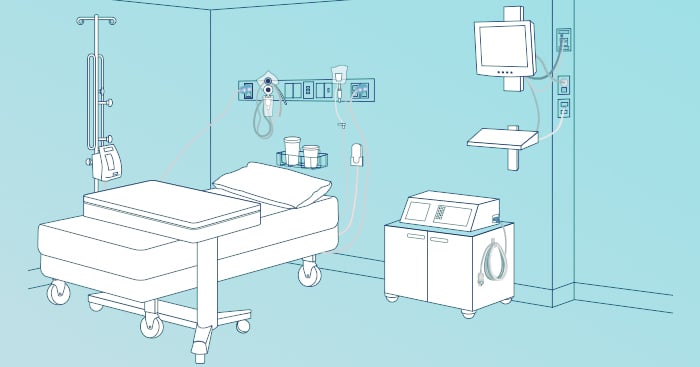The Long and Short of Cord Length
Posted on 1/25/21 9:13 AM

When it comes to cords and cord length, is bigger better or is less more? It all depends on the application of your electrical design.
“In regards to medical equipment, if you go beyond the 12-15 feet length for medical cords, for equipment attached to the patient, it becomes much more difficult to meet the equipment standard requirements for resistance and leakage current for the entire system,” Dan Ford said, Interpower’s Technical Support Specialist. “Currently there is no UL standard for Hospital Grade cord length, which is likely due to there being hundreds of standards covering a myriad of medical equipment with differing requirements.”
The longer the cord, the more leakage current and resistance it will produce. Medical applications standards only allow so much leakage current due to the proximity of the patient. In Medical equipment that is not “patient connected,” this isn’t such an issue and thus cords can be longer.
“There are many issues with having longer cord lengths,” Ford said. “One is voltage drop through the cable of the cord. The resistance in the copper is measured per foot. In a cord 50 feet or longer, UL requires derating for current rating. As current travels through the copper conductor and meets the inherent resistance of the cable, voltage will be lost, causing heat to build up inside the cable jacket and may melt the cord or start a fire. UL testing demonstrates this. Also, a longer cord can act like an antenna, which will draw in noise and even match the wavelengths of certain signals. And you don’t want that level of EMI/RFI in most hospital settings."

Granted, many of the testing rooms in hospitals and clinics are larger and kept at slightly cooler temperatures to accommodate powerful equipment. But patient rooms are often cramped and shared by other patients attached to critical and portable life-saving equipment. In the latter, cord length can be paramount to patient safety.
“Naturally many customers want to make their equipment portable,” Ford said. “They want to move it around a room or an area without having to plug it in to different outlets. But by adding more cord length or an APS system using multiple cords plugged into peripheral equipment, you quickly multiply the total cord length, thus adding more resistance and leakage.
The solution, according to Ford, is to calculate cord length from the location(s) of your equipment to the wall socket. Or if you’re using an Accessory Power System (APS) and jumper/connector cords, you must calculate the length of cord to the socket as well as the length of each individual cord plugged into the APS to calculate total length.

At the very least, going over 50 feet in cord length may adversely affect the performance of your equipment to the point of causing it damage. According to Ford, one way around the 50-foot cord dilemma is to use larger gauge wire in your cord if you need the full 15As to reach the equipment—larger wires have less resistance.
Topics: electrical safety, voltage drop, hospital-grade cords, medical requirements




